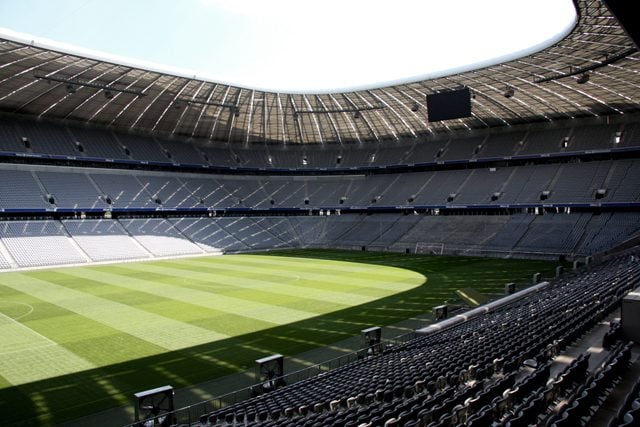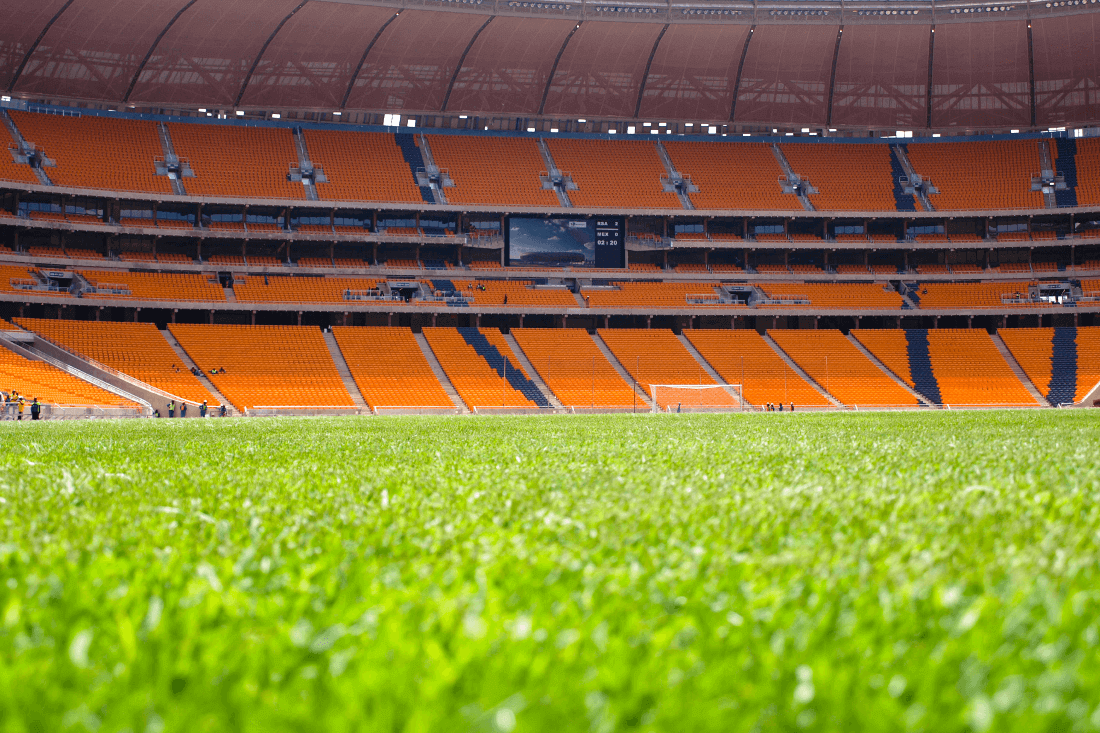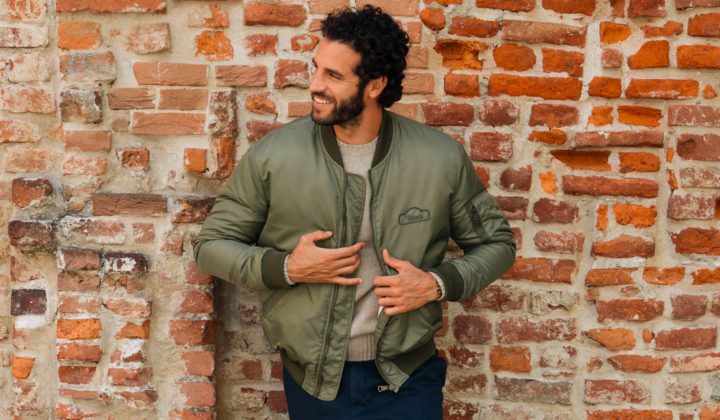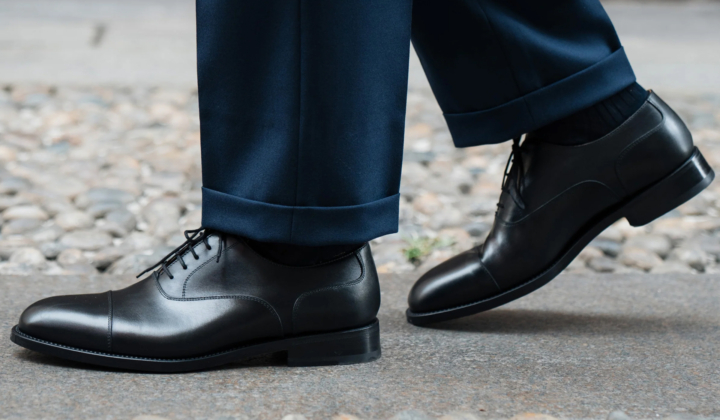Train like a Professional Footballer
Last month we released an article named Eat Like A Professional Footballer – it was really popular, so we have commissioned the final part to this mini-series; Train like a Professional Footballer. With expert tips from Daryl Richards (read more about Daryl at the bottom of this post) – eat healthy and stay strong.
Introduction
Football (soccer) is a fast paced game that requires a variety of different strength and fitness qualities to compete at the highest level.
A modern day player must have the ability to both accelerate and decelerate quickly, turn and change direction at high speed, whilst having the stamina to maintain this for a 90 minute game.
Football players are generally lighter and more agile athletes that don’t require huge levels of physical mass however, it is important they are strong in the right areas in order to move at pace, hold off and shield opponents from the ball, and of paramount importance to prevent injuries.
Taking the above into account it is necessary that strength training must be incorporated alongside on pitch conditioning for optimal results. With this in mind here are 5 important programming considerations for football preparation:
Posterior Chain
Emphasise the posterior chain (hamstrings, glutes, spinal erectors) in strength training. 0-5m speed is critical in football whether it be getting to the ball first or accelerating past a defender. Squats and front squats are fantastic exercises if done safely (and should be included) but a strong posterior chain can help provide the necessary force to apply power quickly, and the following are just some of the exercises that can be used to train these muscle groups:
- Back extension variations.
- Leg curl variations.
- Romanian Deadlift.
- Full Deadlift from the floor.
- Olympic lift variations* (power clean, power snatch or pulls).
*These are the most advanced exercises and can be very effective though mastery of the previous exercises should precede them. If you don’t know how to perform any of these exercises it is imperative you hire a competent trainer/coach who can teach you the correct technique (good sources include UKSCA and PICP certified coaches).

Injury Prevention
Preventing common injuries by strengthening the glutes, adductors and VMO is key. Knee injuries are commonplace in soccer so stability at the hips is vital to help prevent their occurrence. The glute medius (outer surface of pelvis) plays a stabilising role at the hip and knee and can be trained with a very simple drill called a Clam. This is an entry level drill aimed at those who require the ability to activate this muscle so try to move to more integrated drills when possible.
Adductor (inner thigh/groin) strains are also common in football due to the quick changes of direction which can be remedied with a simple and safe exercise called a side step up that helps to target the adductors with the added benefit of working the glute medius too.
For those who don’t know the VMO (vastus medialis oblique) is the tear drop shaped muscle sitting on the inside of the thigh above the knee. The VMO provides direct stability at the knee joint helping to prevent unwanted injuries such as ACL tears (common in soccer) so some isolated exercises can be beneficial especially if you have previous knee issues.
Most step up variations will help target this area but if especially weak or recovering from a knee injury then including a Peterson step up will provide some extra isolation to this area.
*Once again seek proper coaching to learn the exercises properly if you don’t know how to perform them.
Plyometrics
Plyometric training or jump training allows us to develop more force in less time that can translate to increased speed and quickness on the pitch. Starting with a simple and safe drill such as ankling (jumping on the spot) can begin to increase strength and stiffness around the ankle, allowing force to be absorbed and utilised more efficiently. Be sure to keep knees stiff, pull toes up as you jump, keep heels off the floor and work on short explosive ground contacts. Just 1-2 sets of 20 reps can be included in a warm up as a starting point but look to seek proper coaching preferably from a qualified coach from the UKSCA to learn the proper technique and to progress to the more advanced movements. It is worth noting that plyometric training can also help reduce the risk of injury to the lower body and also improve running economy (absorbing and using stored energy more efficiently) meaning less energy wasted during a game.
Interval Training
An aerobic base is definitely important in soccer given that elite players can cover up and around 10km in a 90 minute game.
However the nature of the game leans towards shorter sprints with varied recovery times (anaerobic fitness) so including some interval training can be beneficial. An example could be to start with a rest to work ratio of around 4:1 (10 seconds work followed by 40 seconds recovery) gradually building up speed as fitness improves and then looking to decrease rest times. This can be done in numerous ways including short accelerations (up and around 30m), shuttle runs and even cone drills to incorporate change of direction. Last but not least do not discount the value of short or small sided games as a way to develop anaerobic fitness in a much more specific setting.
Soft Tissue Health
Last but not least if you are training hard and playing consistently then an effective routine of stretching incorporating soft tissue release (foam rollers etc) will go a long way to decreasing risk of injuries and increasing longevity in the game. A tight muscle with trigger points will NOT function effectively reducing your performance not to mentions the increased injury risk, so take this part of your physical preparation as seriously as the rest of it.
Stretch to win by Anne an Fredericks is an excellent text with guidelines on how to construct your own stretching routine specific to your needs. On a final point if your budget allows consider regular deep tissue massage and employing treatments such as ART and MAT if soft tissue injuries happen to occur.
Words by Daryl Richards whose qualifications include: Premier qualified Personal trainer and massage therapist; CHEK certified exercise coach; PICP (Charles Poliquin) level 1; PICP level 2; PIMST (instant muscle strengthening techniques); MAT (Muscle Activation Technique); Poliquin Bio Signature practitioner level 1; UKSCA accredited strength and conditioning coach at KX Club – who you can follow on Facebook and Twitter for more great tips for keeping on shape.







